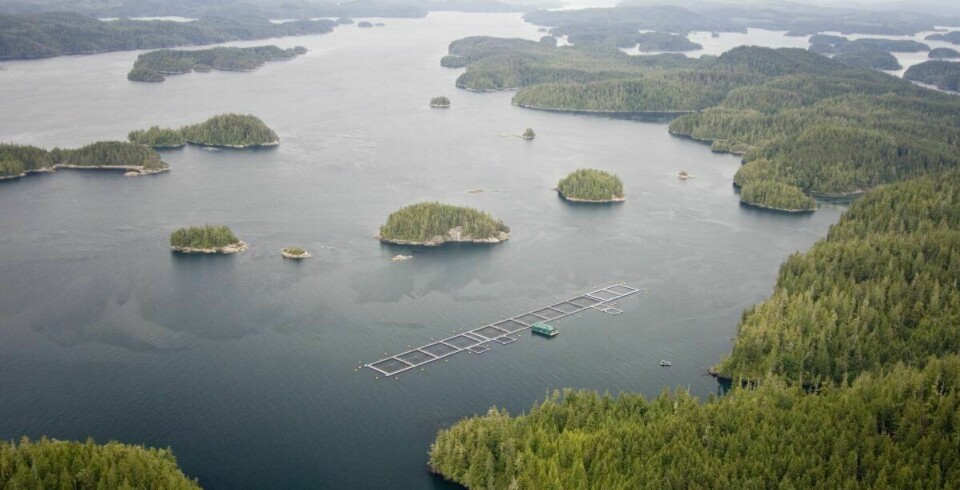
Salmon farms ‘don’t add to wild fish lice levels in BC’
Scientists find no statistically significant association between parasites on Atlantic, chum and pink salmon
A new peer-reviewed report published on the Department of Fisheries and Oceans Canada’s (DFO) website concludes that sea lice on farm-raised salmon do not impact lice levels on wild juvenile salmon in British Columbia.
The Science Response Report has been published by the Canadian Science Advisory Secretariat (CSAS), which coordinates the scientific peer review and science advice for DFO. It results from a national peer review process on the association between sea lice (Lepeophtheirus salmonis) from Atlantic salmon farms and sea lice infestation on juvenile wild Pacific Salmon in BC held on June 24, 2022.
The report was requested by the DFO Aquaculture Management Division, which regulates fish farms in BC, to inform the development and application of adaptive management approaches to address interactions between sea lice on farmed Atlantic salmon and wild Pacific salmon. It focused on four areas – Clayoquot Sound and Quatsino Sound, on the west coast of Vancouver Island, and the Discovery Islands and Broughton Archipelago, sandwiched between Vancouver Island and the mainland.
The objectives of the report were to:
- estimate the number of L. salmonis copepodids (infective sea lice larval stage) produced by Atlantic salmon farms in BC;
- summarise counts of sea lice numbers on wild juvenile Pacific salmon, and
- determine the statistical strength of association in between sea lice infestations on Atlantic salmon farms and prevalence on wild juvenile Pacific salmon populations in BC.
The report’s authors concluded: “No statistically significant association was observed between infestation pressure attributable to Atlantic salmon farms and the probability of L. salmonis infestations on wild juvenile chum and pink salmon in Clayoquot Sound, Quatsino Sound, Discovery Islands, and Broughton Archipelago. However, the data suggests a positive trend in all studied areas. The lack of statistical significance implies that the occurrence of L. salmonis infestation on wild migrating juvenile Pacific Salmon cannot be explained solely by infestation pressure from farm-sourced copepodids.”
Diligent precautions
In a press release, the BC Salmon Farmers’ Association (BCSFA) pointed out that report adds to the nine previous CSAS science reviews on salmon aquaculture in BC, that concluded “minimal risk” to Fraser River Sockeye salmon from all relevant fish pathogens of concern.
It added that the current report indicates that there is no statistical correlation between sea lice counts on wild and farmed populations of salmon, meaning that the presence of farmed salmon does not appear to have a measurable impact of sea lice counts on wild salmon populations.
“Sea lice naturally occur in the Pacific Ocean, and farm-raised salmon enter the ocean free of sea lice. The BC salmon farmers, under DFO stringent regulations, diligently practice precautionary management measures to minimise sea lice transmission from farmed to wild salmon,” stated the Association.
“Through innovation, the sector has continuously improved management practices to reduce the risk of sea lice interactions between wild and farmed salmon populations. This includes focused integrated pest management with a suite of treatment tools. This latest science review is a confirmation that the hard work is paying off.”
Improve and innovate
Brian Kingzett, recently appointed executive director of the BCSFA, said: “As a sector, we continue to improve and innovate to ensure that our operations have minimal impact on the surrounding ecosystem. As farmers, and as British Columbians, we care about wild salmon and agree whole heartedly with DFO (fisheries) Minister Joyce Murray regarding ensuring the protection of wild Pacific salmon.”
The CSAS report looked at thousands of sea lice counts and estimates dating back to 2013.
“Across all years, the mean prevalence of L. salmonis infestation was highest on wild juvenile chum salmon in Clayoquot Sound and lowest on chum and pink salmon in Discovery Islands,” the authors said in their conclusion.
Former fisheries minister Bernadette Jordan announced the closure of 19 salmon farms in the Discovery Islands in December 2020 in a decision that was later overruled by a court. Murray is due to announce whether licences will be renewed for those farms shortly.























































